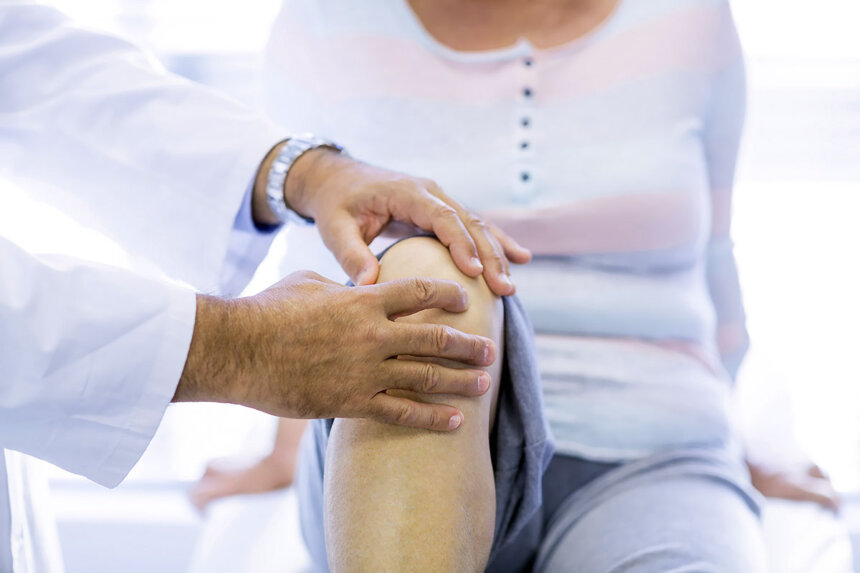Septic arthritis is a serious joint infection that happens when bacteria or other germs invade the space inside your joint. This condition can damage cartilage and bone quickly if you don’t get treatment fast. Most cases affect a single large joint like the knee or hip. Getting medical help right away protects your joint from permanent harm and gives you the best chance for full recovery.
What Causes Septic Arthritis?
Bacteria cause most cases of septic arthritis, with Staphylococcus aureus being the most common culprit. This germ lives on healthy skin but can enter your bloodstream and travel to your joints. The medical term infectious arthritis reflects the disease’s core nature—an invasion by microorganisms.†
Germs reach your joints through three main routes: through your bloodstream from infections elsewhere in your body, from direct injury that punctures the joint, or by spreading from nearby infected tissue. A urinary tract infection, skin wound, or pneumonia can send bacteria into your blood through a process called hematogenous spread. From there, they settle in a joint and multiply. Direct injuries like animal bites, deep cuts over a joint, or even medical procedures can introduce bacteria straight into the joint space. Once bacteria enter the joint, they trigger a massive immune response that floods the area with inflammatory cells and chemicals that break down cartilage and bone.
The bacteria bind tightly to proteins in your joint tissue, making them hard to clear. Staphylococcus aureus has special surface proteins that let it stick to collagen, cartilage proteins, and even prosthetic materials. When bacteria produce pus in the joint, doctors sometimes call this pyogenic arthritis or suppurative arthritis, terms that describe the pus-forming nature of the infection. Fungal and viral causes are less common but can occur in people with weakened immune systems.
Recognising Symptoms and Who Is at Risk
Your joint becomes severely painful, swollen, warm to touch, and red.
More than half of people with septic arthritis have joint swelling, pain, and fever, though sweats and chills are less common. The pain gets worse when you try to move the joint, and you may not be able to put weight on it. The knee is the joint most often infected (accounting for 50% of cases), followed by hip (20%), shoulder (8%), ankle (7%), and wrist (7%). Some people develop infection in multiple joints at once, called polyarticular septic arthritis, which tends to cause more severe whole-body symptoms. This stands in contrast to monoarticular involvement, where only a single joint is affected. Symptoms may appear more subtle in older adults, people with artificial joints, or those taking immune-suppressing drugs.
Certain factors put you at higher risk: joint damage from conditions like rheumatoid arthritis, having a prosthetic joint, being immunosuppressed, intravenous drug use, diabetes, recent joint surgery or injections, skin infections, HIV, and being over age 80. People with rheumatoid arthritis face especially high rates, with 70 cases per 100,000 person-years compared to just 2-5 cases per 100,000 in the general population. Your medication matters too. Rheumatoid arthritis patients taking anti-TNF biologics have more than double the infection rate compared to those on traditional disease-modifying drugs. Unlike aseptic joint conditions that lack infection, septic arthritis requires immediate antimicrobial treatment.
Diagnosing Septic Arthritis: Tests and Imaging
Doctors confirm septic arthritis by examining fluid from your infected joint.
Joint aspiration, also called arthrocentesis, provides the definitive diagnosis. Your doctor inserts a needle into the joint and removes fluid for analysis. This procedure gives immediate information and relieves some pressure and pain. The fluid gets sent to the lab for three critical tests: cell count, Gram stain to look for bacteria under the microscope, and culture to grow and identify the exact organism. Blood tests help too. Your doctor checks for elevated inflammatory markers and may take blood cultures to see if bacteria are circulating in your bloodstream.
Synovial Fluid Analysis (Arthrocentesis)
Infected joint fluid typically shows more than 50,000 white blood cells per microliter, with over 90% being inflammatory cells called polymorphonuclear cells. The synovial fluid—normally a clear lubricating substance within the joint capsule—may look cloudy or even contain pus when infected. Lab technicians stain the fluid and examine it under a microscope, which reveals bacteria in about half of cases. Culture results take 24-72 hours but identify the specific bacteria and which antibiotics will work best. Newer molecular testing called metagenomic next-generation sequencing can detect bacteria with 88.5% sensitivity and works even better on joint fluid samples. This advanced test finds organisms that traditional cultures miss and helps when you’ve already started antibiotics before the fluid sample was taken. The synovial membrane, which lines the joint and produces this fluid, becomes inflamed and damaged during infection.
Imaging Modalities and When They’re Used
X-rays rarely help diagnose early septic arthritis because bone and cartilage damage takes time to show up on plain films. Ultrasound helps guide needle placement during aspiration and can detect fluid in joints that are hard to examine. MRI provides detailed images of the joint, showing swelling in surrounding tissues and early bone changes. Your doctor orders imaging mainly to rule out other problems and assess how much damage has occurred, not to make the initial diagnosis.
Treatment and Management Strategies
Immediate treatment combines draining infected fluid and giving targeted antibiotics.
Your joint must be drained because antibiotics alone cannot clear a bacterial arthritis infection from a closed joint space. Doctors drain the joint through repeated needle aspirations or during surgery. Arthroscopic surgery uses small incisions and a camera to wash out the joint thoroughly. Open surgery may be needed for deeper joints like the hip or when the infection is severe. Traditional guidelines recommended four full weeks of intravenous antibiotics, but recent research shows that a few days of IV antibiotics followed by oral antibiotics works well for infections without complications.
Your antibiotic choice depends on which bacteria caused your infection. Doctors start treatment with empiric antibiotics before culture results come back, choosing drugs based on resistance patterns in your community. If MRSA joint infection rates are high in your area, vancomycin gets added to the initial regimen. MRSA septic arthritis occurs more often in elderly patients with multiple health conditions and carries higher mortality than methicillin-sensitive infections. Once culture results identify the bacteria, your doctor switches to targeted antibiotics. Treatment for prosthetic joint infections may include rifampin because this drug penetrates the biofilms that bacteria form on artificial materials.
Physical therapy helps you regain joint motion and strength after the infection clears. Your therapist starts with gentle range-of-motion exercises and gradually adds weight-bearing activities as your joint heals. The goal is to restore normal articular cartilage function and prevent permanent stiffness.
Preventing Septic Arthritis and Monitoring Recovery
Take care of skin infections promptly and manage chronic health conditions well.
Good hygiene and wound care prevent bacteria from entering your bloodstream. Clean cuts and scrapes thoroughly and watch for signs of infection like increasing redness, warmth, or pus. Control diabetes carefully because high blood sugar impairs your immune system. Septic arthritis rates are rising globally, particularly among older adults and people with multiple health conditions, with incidence ranging from 2-10 cases per 100,000 people yearly in Western countries. In people aged 80 and older, the rate jumps to 14 per 100,000 annually.
If you have an artificial joint, stay alert for any new joint pain or swelling. Prosthetic joint infections affect 2-10% of all joint replacement recipients, and the risk is highest in the first year after surgery. People who had septic arthritis before getting a joint replacement face infection rates near 6%, much higher than the 1% rate in people without prior infection. This type of periprosthetic infection requires specialized treatment. Report persistent pain to your doctor even if it seems minor, as prosthetic joint infection symptoms can be subtle.
Your doctor monitors your recovery with blood tests and repeat joint fluid analysis. C-reactive protein levels and other inflammatory markers track your response to treatment more reliably than white blood cell counts or temperature. Most people need several weeks to months of antibiotics. Physical therapy continues until you regain normal joint function. Without prompt treatment, mortality ranges from 7-15%, and permanent joint damage occurs in many survivors. Early diagnosis and aggressive treatment give you the best chance for complete recovery and normal joint use.
Key Points for Readers:
1. Septic arthritis is a medical emergency. Permanent cartilage and bone damage can occur within 24-48 hours if antibiotic treatment isn’t started quickly.
2. Joint aspiration provides the definitive diagnosis. This procedure removes fluid for testing while reducing pain and pressure in the infected joint.
3. Staphylococcus aureus causes most cases. This bacteria is responsible for the majority of septic arthritis infections across all age groups.
4. Treatment requires both drainage and antibiotics. Neither approach works well alone; combining joint drainage with targeted antibiotics gives the best results.
5. Certain groups face much higher risk. People with rheumatoid arthritis, prosthetic joints, diabetes, or weakened immune systems have substantially elevated infection rates.
† Etymology note: The term “arthritis” comes from Greek roots: “arthr-” meaning “joint” and “-itis” meaning “inflammation.” When combined with “septic” (from Greek “septikos,” meaning putrefactive or causing decay), the complete term describes joint inflammation caused by infection-producing organisms.






